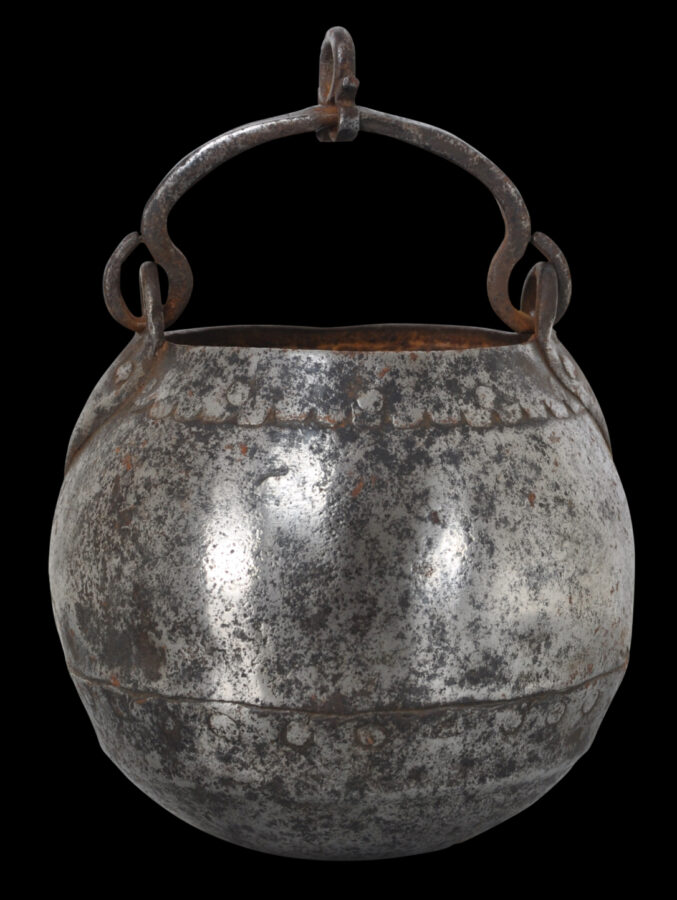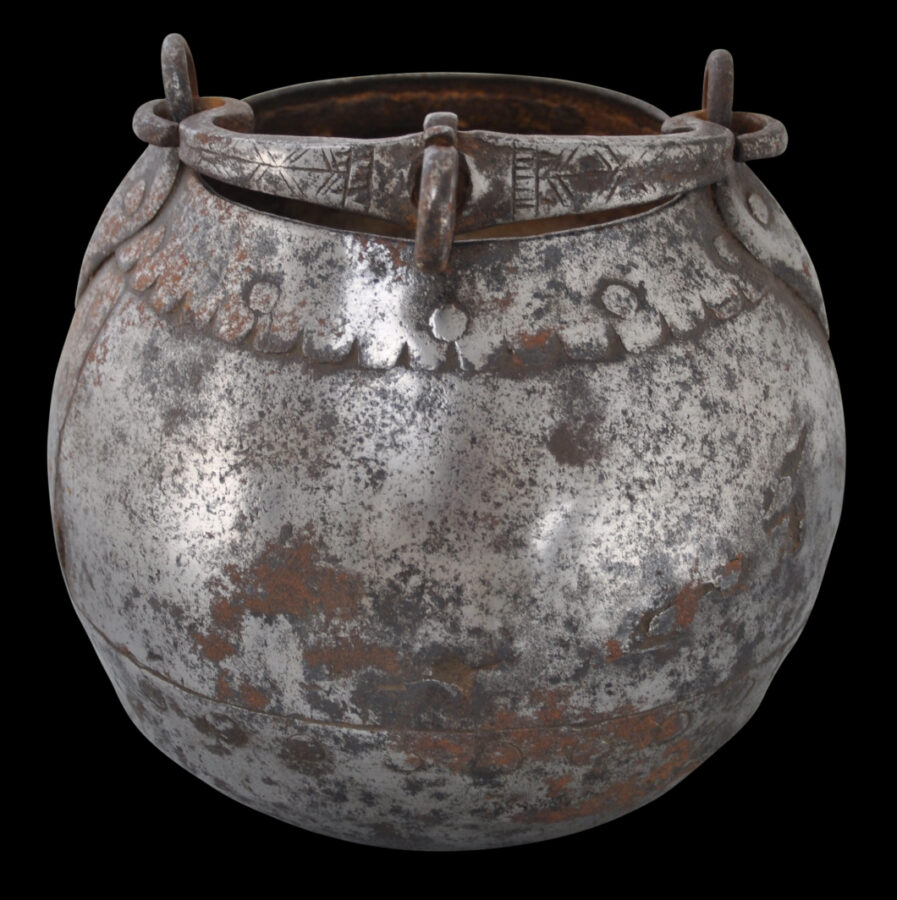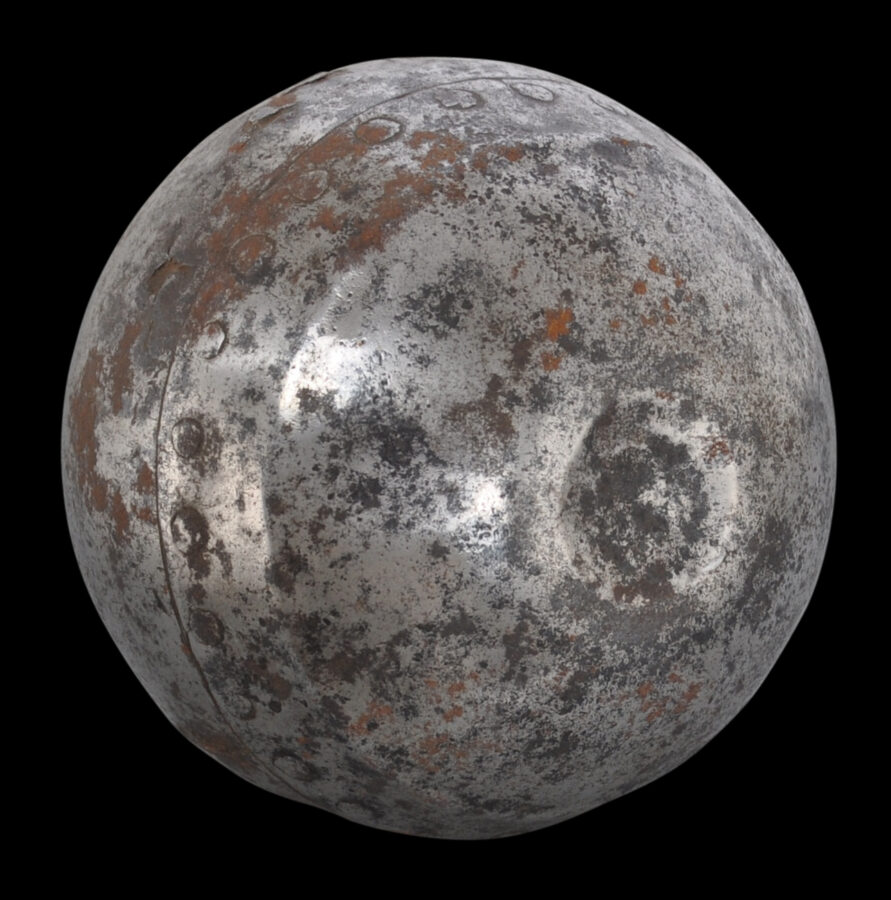This thick-walled iron bucket has a pleasing elongated, spherical shape. It has a dimple in the base which allows it to stand, a reinforced rim, and thick, swing handle that is engraved with geometric motifs. The body has been constructed from hammered sheets of iron joined with thick rivets.
A related example was offered at Bonham’s London ‘Islamic and Indian Art’, October 25, lot 79.
The purpose of such a vessel is unclear. It is unlikely to have been used for cooking – it is too small and the shape is awkward. Another suggestion is that it was used to hold embers and would be passed around on a battle field, the embers being used to ignite canons. The fact that the outside shows no evidence of burning but the interior does seem to have corrosion associated with burning appears to support this conjecture.
Other examples have been found in India – Rajasthan – and are believed to have been used for collecting water from wells (but they do seen unnecessarily heavy for that purpose but then the weight would allow the vessel to sink into the water so that it could be collected.)
The Timurid Empire was a Persianate Turco-Mongol empire that comprises modern-day Iran, Central Asia, the Caucasus, Iraq, Kuwait, Afghanistan, as well as parts of contemporary India, Russia, Pakistan, Syria and Turkey.
The vessel here has obvious age, and significant sculptural appeal.










